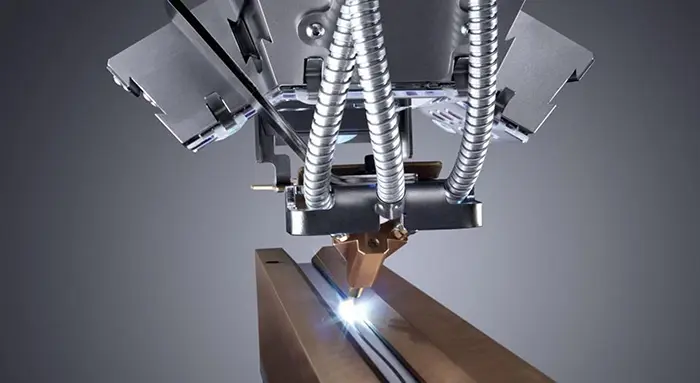Coherent lasers are among the most powerful tools in modern science, technology, and industry. With their ability to emit light that is both monochromatic and phase-aligned, coherent lasers are indispensable in fields ranging from telecommunications to medical surgery. This comprehensive guide will delve into what makes a laser "coherent," how coherence impacts its performance, and the wide-ranging applications and innovations enabled by this unique property.

Understanding the Concept of Coherence in Lasers
What Does Coherence Mean?
Coherence refers to the degree to which light waves maintain a constant phase relationship. In the context of lasers, this means that the emitted light waves travel in sync—both temporally and spatially. Temporal coherence pertains to how consistent the phase is over time, while spatial coherence describes how well the phase aligns across the beam's width.
Coherence vs. Incoherence
Unlike light from standard sources like incandescent bulbs, which is incoherent and consists of waves of varying phases and frequencies, coherent laser light is uniform and predictable. This uniformity allows laser beams to be sharply focused and to maintain their integrity over long distances.
Why Is Coherent Light Important?
Coherent light is crucial for applications that require precision and control. Whether in scientific research, industrial machining, or fiber-optic communication, the stability and directionality of coherent light offer distinct advantages over incoherent sources.
The Physics Behind Coherent Lasers
Stimulated Emission
The principle of stimulated emission, first proposed by Einstein, underpins laser operation. When an electron in a high-energy state encounters a photon of a specific frequency, it can be induced to drop to a lower energy level, emitting another photon that matches the first in phase, frequency, and direction.

Optical Resonators and Feedback
A laser cavity or optical resonator ensures that the photons bounce back and forth through the gain medium, amplifying the light and promoting coherence. This controlled feedback is key to maintaining phase alignment.
Gain Medium and Pumping
The gain medium (solid, liquid, or gas) determines the laser’s wavelength, while external energy (pumping) excites the atoms to higher energy levels. Together, these components drive coherent laser output.
Different Types of Coherent Lasers
Gas Lasers
Gas lasers, such as CO₂ and HeNe lasers, use gases as the gain medium. CO₂ lasers are widely used in industrial applications like cutting and welding, while HeNe lasers are ideal for laboratory work due to their stable, coherent beams.
Solid-State Lasers
These lasers use crystalline or glass rods doped with rare-earth elements like Nd:YAG. They are highly efficient and capable of producing high-powered coherent beams, making them useful in both medical and industrial sectors.
Fiber Lasers
Fiber lasers utilize optical fibers doped with rare-earth ions as the gain medium. Known for excellent beam quality and high efficiency, they are popular in telecommunications, manufacturing, and medical equipment.
Semiconductor Lasers (Diode Lasers)
These compact lasers convert electrical energy directly into coherent light using semiconductor materials. Common in barcode scanners, laser pointers, and optical drives, they are also key in communication technologies.
Ultrafast Lasers
Ultrafast lasers produce incredibly short pulses (femtoseconds to picoseconds) of coherent light. Their high temporal coherence makes them invaluable in time-resolved spectroscopy and micromachining.
Applications of Coherent Lasers
Medical Industry
Coherent lasers are used in surgeries (like LASIK), dermatological procedures, and cancer treatments. Their precision minimizes damage to surrounding tissue and improves recovery times.
Manufacturing and Industry
Laser cutting, welding, engraving, and 3D printing all rely on the focused power of coherent light. These lasers ensure clean cuts, high-speed processing, and reduced material waste.
Scientific Research
From atomic clocks to spectroscopy and quantum computing, coherent lasers are foundational tools in physics and chemistry. Their stability and predictability support high-accuracy experiments.
Telecommunications
In fiber-optic systems, coherent lasers transmit data over vast distances with minimal loss. Their phase consistency allows for advanced modulation schemes and high-bandwidth communication.
Aerospace and Defense
Used in range-finding, target designation, and directed-energy weapons, coherent lasers play a critical role in defense systems due to their accuracy and reliability.
Advantages of Coherent Lasers
Directionality
Coherent lasers produce a narrow beam that stays focused over long distances, ideal for precision tasks.
High Intensity
The synchronized wavefronts allow the energy to be concentrated, increasing the beam’s effectiveness in cutting, measuring, or imaging.
Monochromaticity
Most coherent lasers emit a single wavelength, useful in spectroscopy, holography, and interference-based techniques.
Energy Efficiency
Modern coherent laser systems, especially fiber and diode lasers, offer high electrical-to-optical efficiency.
Challenges and Considerations
Cost High-end coherent laser systems can be expensive to purchase and maintain. However, prices have come down with technological advances.
Heat Management Coherent lasers, especially at high power levels, generate significant heat and require advanced cooling systems.
Alignment Sensitivity Maintaining coherence demands precise alignment, especially in interferometry or optical experiments.
Repair and Maintenance of Coherent Lasers
Importance of Regular
Maintenance Routine servicing ensures stable coherence and optimal output. Misalignment or component wear can degrade performance.
Common Issues
Typical problems include beam instability, reduced power output, and optical contamination. These issues require professional diagnostics and repairs.
Supported Brands and Models
We service major brands like Coherent, IPG, Spectra-Physics, and more. From ultrafast to diode systems, our engineers are trained across technologies.
Transparent Pricing
Repairs typically begin at $300 for diagnostics and basic issues. More complex repairs are quoted after initial inspection. We use only original parts for replacements.
Our Repair Process
Free consultation
Laser system inspection
Diagnostic reporting and quote
Repair and testing
Return and after-sales support
Warranty and Support All repairs come with a 6-month warranty on parts and labor. Technical support is available 24/7 to address any post-repair issues.
The Future of Coherent Lasers
Integration with AI and Automation
AI-driven beam steering, diagnostics, and adaptive power control are revolutionizing laser technology.
Quantum Technologies
Coherent lasers are vital in quantum computing, secure communication, and next-gen sensors.
Compact and Portable Designs
Miniaturized coherent laser modules are making their way into wearable tech, mobile diagnostics, and handheld industrial tools.
Coherent lasers are a cornerstone of innovation across numerous fields. Their precision, power, and versatility have made them essential to modern life—from the smartphone in your hand to the operating room. As technologies advance, coherent lasers will only grow in significance, continuing to shape the way we see and interact with the world.
If you're considering adding coherent laser technology to your workflow or need expert repair services, [contact our team today] for a free consultation.

